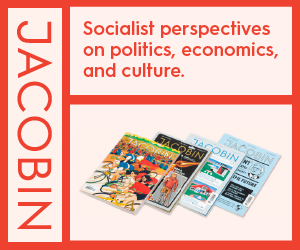It’s the Political Economy, Stupid
Exhibition catalogues rarely serve as more than an archive, but here the difference is by design. Envisioned as a series of intersecting projects, It’s the Political Economy, Stupid (Pluto Press, 2013) exists independently of — and parallel to — four site-responsive exhibitions (with more stops to come) and various public programming. The texts selected by the curators/ editors suitably address the complex situation of art, art-making, and artists within the realities of contemporary global capitalism. Although previous consideration of the socio-cultural value of art beyond its capacity to decorate, entertain, or convey individual emotion is helpful to unpack the ideas presented, it is not mandatory. Brian Holmes’s “Art After Capitalism” provides a great summary of contemporary art forms and ponders their transformative potential. Beyond that, there are many topics that readers reasonably wary of art due to its predominantly complicit position in relation to capitalism will find interesting, such as Julia Bryan-Wilson’s “Occupational Realism,” which discusses whether an artist can be considered a worker.
As a curator of socially and politically motivated practices in contemporary art, I found it surprising that writers in an otherwise radical publication seemed concerned about maintaining distinctions between art and life (e.g. Bryan-Wilson’s suggestion that losing the capacity to name something definitely as art serves neoliberalism’s obsession with constant productivity), or that aesthetic originality matters (“Derivative Days” by Melanie Gilligan), but these are only two of many threads offered for contemplation, and I was ultimately moved to think about ways art is helped or hindered by institutional structures, including public galleries and the market.
Like everyone else, artists need to make a living in this world, and this has become increasingly difficult in the age of precarity and austerity. However, artists motivated by reasons other than the prospect of meaningful and enjoyable self-directed “employment” are right to condemn the insatiable system that devours then reduces their contributions to just another form of capital. Those who argue for the right to compensation for work in one’s field of choice will disagree that progressive artists are better off retaining their integrity and choosing to work outside of dominant systems, but just as Kathi Weeks via Byran-Wilson notes, work isn’t always about selling labour through coercion, it is also what we do when we invent and create on our own terms for our own individual and collective purposes as human beings.
Meaningful, intelligent and provocative resistance bent on destabilizing neoliberal global capitalism, patriarchy, and imperialism that might feature aesthetic qualities, and that we might call art, can be made by people who couldn’t care less about whether their artistry is acknowledged, validated or archived by the so-called art world. Smashing capitalism is not something art does, but rather something artists do, if they choose. And they don’t need no stinkin’ art world to do it. Judith Butler’s “Bodies in Alliance and the Politics of the Streets” observes that people are perfectly capable of living together and building infrastructure to support equality. David Graeber’s “Occupy Wall Street’s Anarchist Roots” likewise reminds us that ignoring the authority of oppressive systems and operating as if they don’t even exist is central to direct action. Both points are key to restoring authentic voice to art, marketplace be damned.
This article appeared in the September/October 2013 issue of Canadian Dimension (Networked Dissent).










